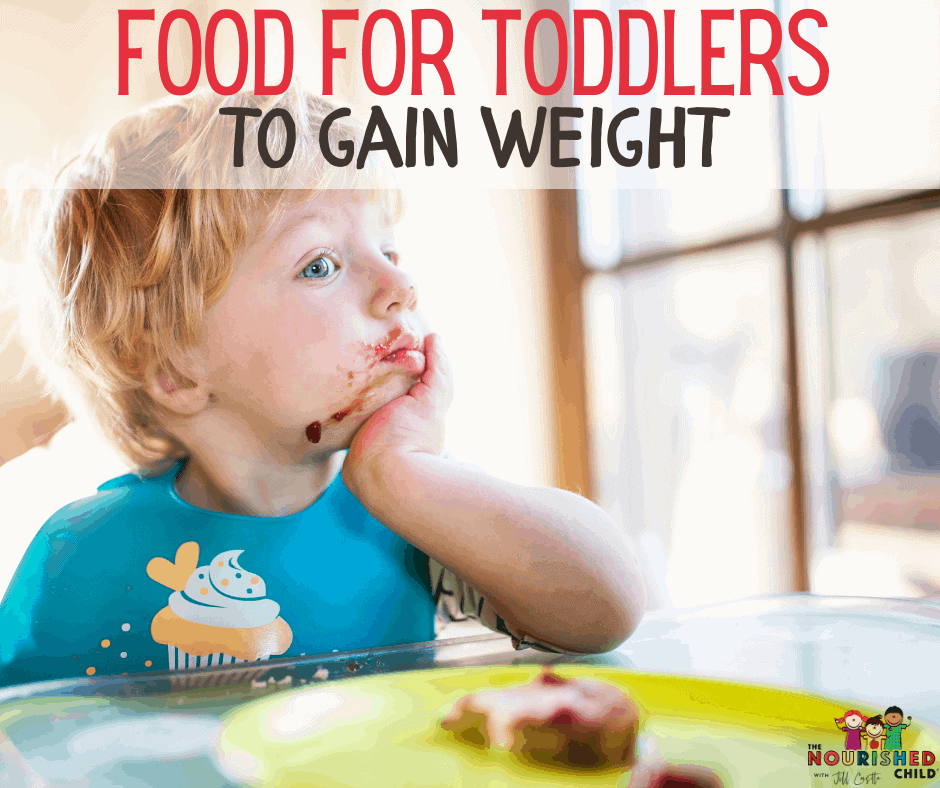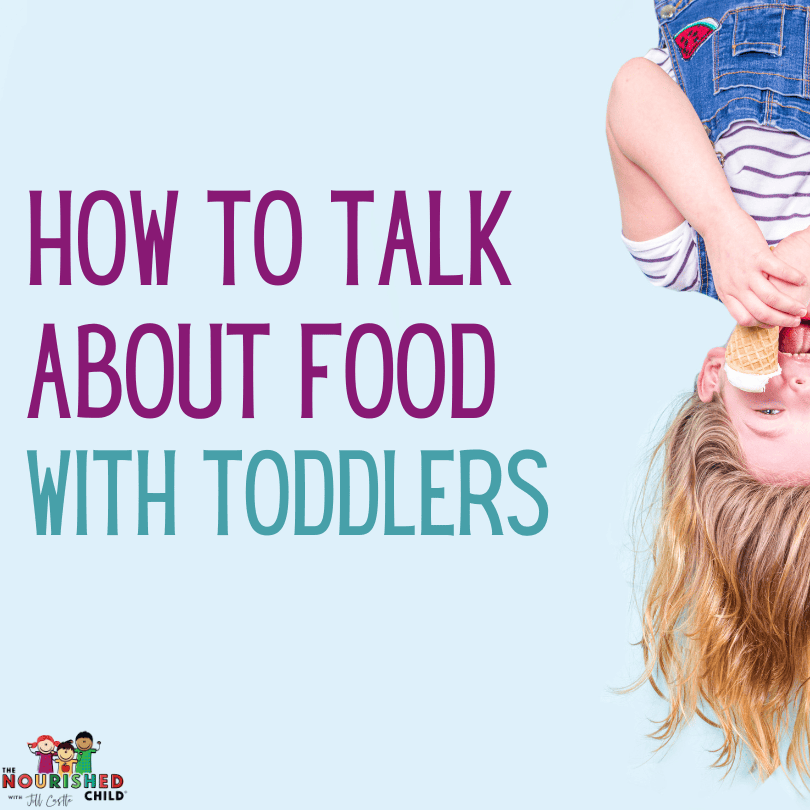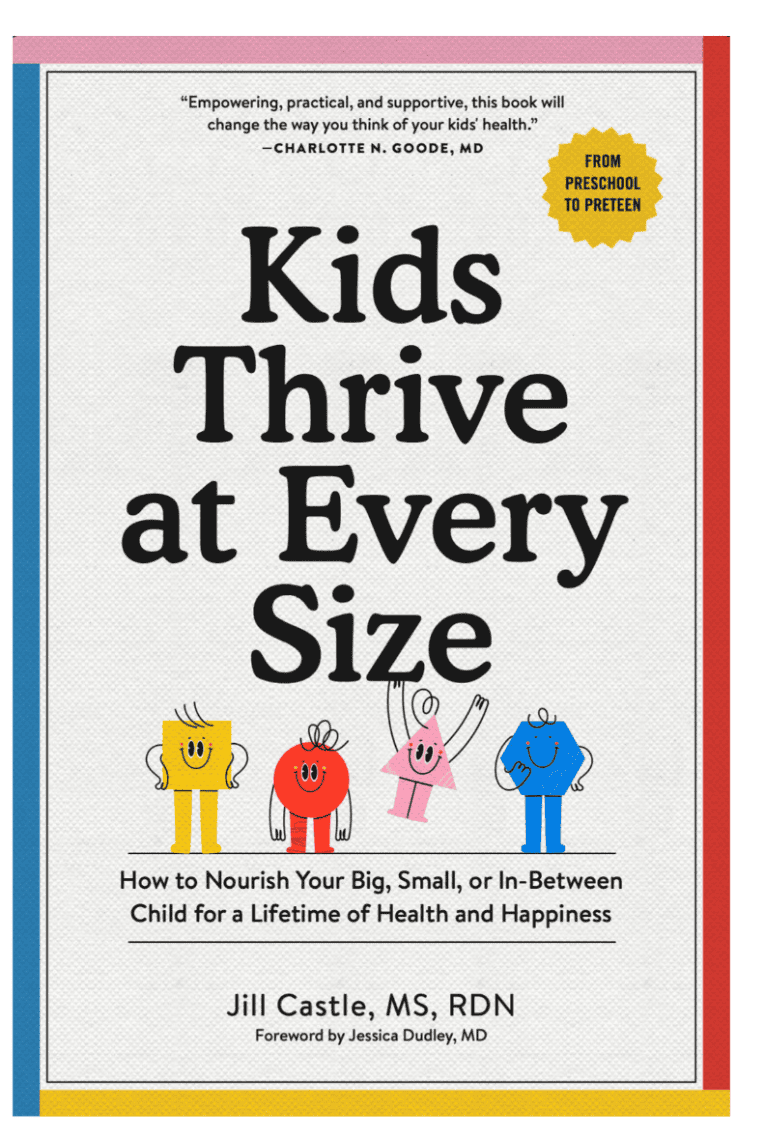Is it Okay for Children to Follow a Pescatarian Diet?
November 2, 2023
Learn about the pescatarian diet, its nutritional quality for growing children, and some risks and advice for children who follow this type of vegetarian diet.
As a registered dietitian, I get a lot of questions from parents. A mom recently told me her 14-year-old daughter wanted to be a pescatarian. She was supportive but had some questions.
Mom asked, Is it okay for a child to become a pescatarian? What nutrients could they be missing by not eating meat? Is eating too much fish a problem?
In this article, I’m covering:
- What’s included (and eliminated) in a pescatarian diet
- The health benefits of this vegetarian lifestyle
- Key nutrients, including essential fatty acids, B vitamins, vitamin D, calcium, iron and protein sources
- Concerns around eating a fish-centric diet, including mercury toxicity
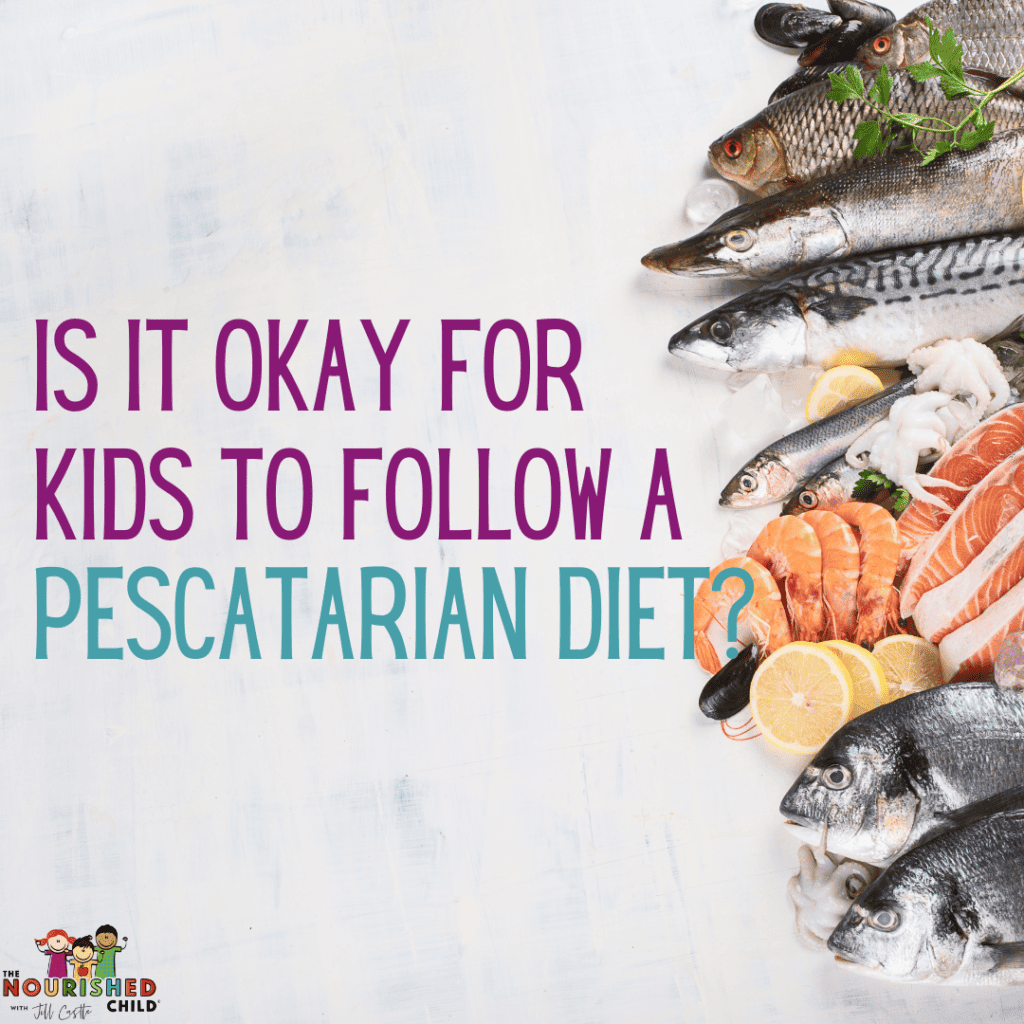
What is the Pescatarian Diet?
The pescatarian diet is a type of vegetarian diet that includes fish and shellfish and other plant-based foods such as fruits, vegetables, nuts, seeds, whole grains, and beans. The pescatarian diet excludes animal products, especially meat, such as beef, chicken, pork, lamb, turkey, or wild game like venison.
Pescatarians may also exclude dairy products and eggs, or they may choose to include them in their diet (a diet pattern called lacto-ovo vegetarian).
When excluding dairy foods, many vegetarian children will consume soy products like soy milk to ensure they have a balanced vegetarian diet.
What Are the Health Benefits of Following a Pescatarian Diet?
A diet rich in plant foods has many health benefits. Pescatarians may experience a lower risk of heart disease by reducing high blood pressure, and lower the incidence of diabetes.
They may also have better skin, reduced risk of cancer, and lower inflammation. Let’s explore some of the main nutrients responsible for these.
Omega-3 Fats
Fish and seafood are packed with essential fatty acids, like omega-3 fats. Omega-3 fats are healthy fats that are especially important for children’s brain development and functioning.
Animal foods contain saturated fat, which has been linked to increased risk of heart disease.
Omega-3 fats help the heart by reducing triglycerides, which are fats that travel around in the blood. They also increase HDL fats, the protective type of fat that fights plaque formation in the arteries.
Studies show that when individuals consume fish several times a week, their risk for heart disease is cut in half.
Eating fish and seafood is the best way to get omega-3 fatty acids, like docosahexaenoic acid (DHA) and eicosapentaenoic acid (EPA). Your child can also get these from a plant-based supplement, but if you’re looking for a natural, whole food that contains omega-3 fats, fish is one of the most concentrated sources.
Omega-3 fats are also linked to improved mood and better brain functioning. Fish like salmon or trout naturally contain DHA and EPA and are considered the highest fish sources of omega-3 fats.
Calcium and Vitamin D
Calcium and vitamin D help children build strong, dense bones which helps prevent fractures and osteoporosis later in life.
Salmon, trout, and tuna are types of fish with a natural source of vitamin D. In fact, the amount of vitamin D found in them can be higher than what is found in fortified foods, like cereal.
If you like canned fish like sardines, anchovies, and salmon, you’ll find they have a good source of calcium and some of the highest content of calcium found in seafood.
[Related]: Calcium-Rich Foods for Kids
Protein
Fish and seafood are also good sources of complete protein (meaning all the essential amino acids are present).
For children and teenagers who want to follow a plant-based diet, the pescatarian diet may be an easier way to get enough protein than a completely vegan diet.
B vitamins and Selenium
Other nutrients can be found in seafood and shellfish. Oysters and mussels, for instance, have a very high concentration of vitamin B12, zinc, and selenium.
These nutrients are essential for the brain and body.
Iron
The good news about following a pescatarian diet is that shellfish are good sources of iron, especially clams, mussels, and oysters, allowing your child to get plenty of iron.
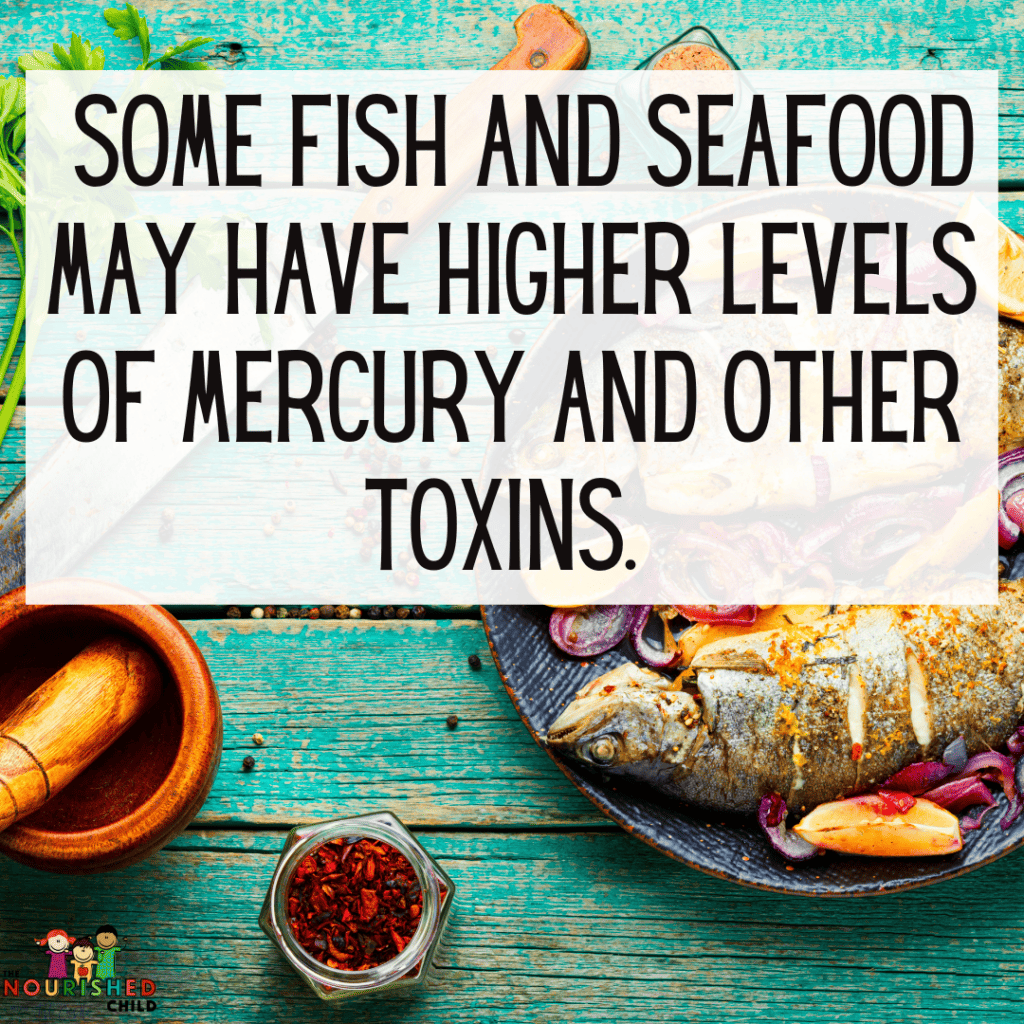
Potential Concerns with a Pescatarian Eating Pattern
Some fish and seafood are sources of mercury and other toxins. This is an important consideration when feeding your child.
The US Food and Drug Administration (FDA) recommends that young children and women of childbearing age, especially pregnant and nursing women, avoid fish that are high in mercury, including tilefish, swordfish, shark, and king mackerel.
These individuals should also limit albacore and yellowfin tuna to one serving or less per week.
Light tuna, on the other hand, something you can get in the can at the grocery store, is lower in mercury and is fine to eat two to three servings per week.
Which fish contains the lowest amounts of mercury?
According to the Environmental Defense Fund’s Seafood Selector and the Monterey Bay Aquarium’s Seafood Watch, these are the safest fish to eat:
- Wild salmon (fresh, frozen, or canned)
- Arctic char
- Atlantic mackerel (limit the consumption of Spanish and King versions of Atlantic mackerel as they may be higher in mercury)
- Sardines (one of the safest fish to eat)
- Sablefish or black cod (limit these to two servings per month for children because they have a moderate amount of mercury content)
- Anchovies
- Oysters
- Rainbow trout
- Albacore tuna (from the North Atlantic Ocean or the Pacific Ocean. Limit to two servings per month in children under five years due to a moderate mercury content)
- Mussels
- Pacific halibut (limit to two servings per month in children under five, because of moderate mercury content)
- Rockfish and catfish raised in the U. S. (Other countries of origin may be contaminated with mercury)
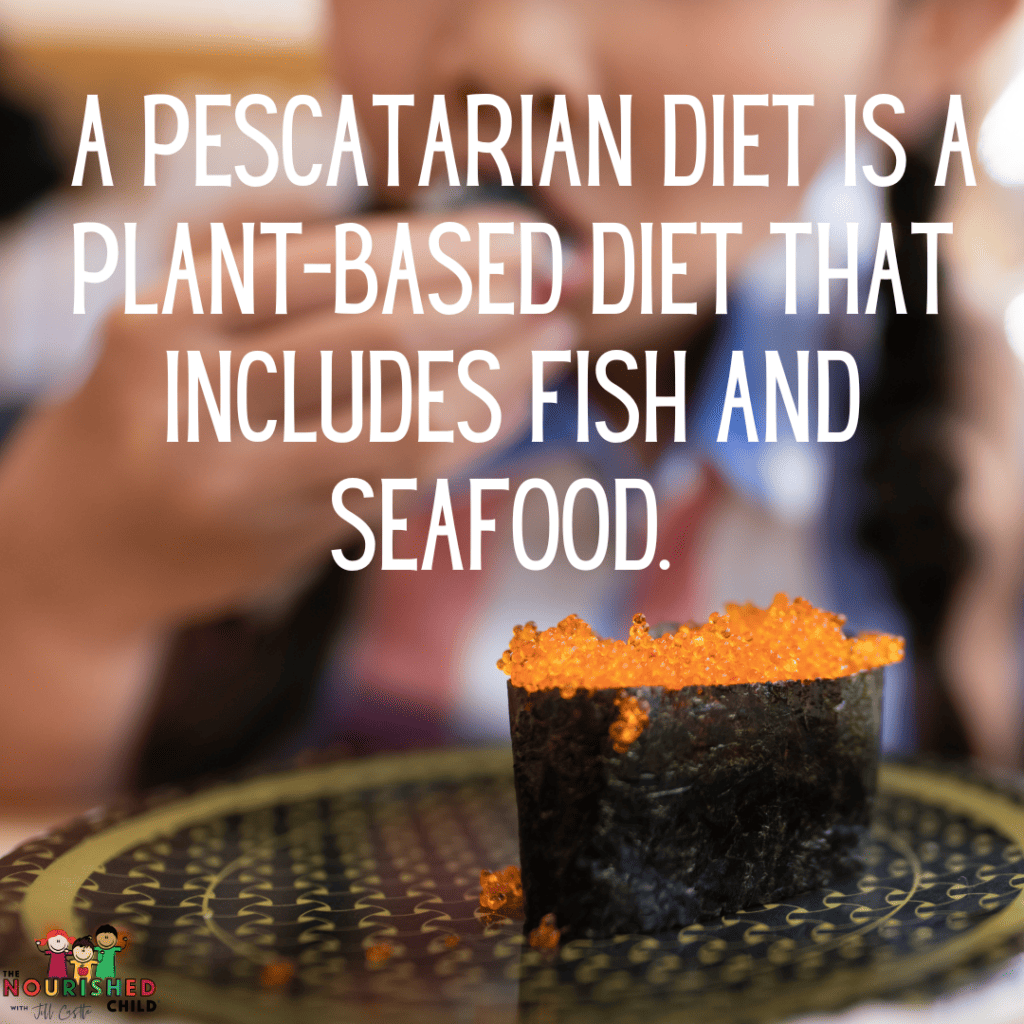
How to Support the Pescatarian Child
When children and teens explore vegetarian eating patterns like the pescatarian diet, there are some universal mistakes I seen them make. Here they are and what you can do:
Aim for a well-planned vegetarian diet
For pescatarians, make sure you replace meat products with fish and seafood, or plant sources of protein like beans or meat alternatives.
For example, replace chicken with beans or tofu. Include the food groups, so a variety of, and enough nutrients are present every day. Help your child by making sure they have a good source of protein at each meal.
Don’t miss important nutrients like iron, calcium, or vitamin B12
With the pescatarian diet, calcium can become more of a concern if teens don’t drink milk or eat dairy foods.
In that case, calcium will need to come from other foods like dark leafy greens, calcium-set tofu, canned fish (with bones), calcium-fortified plant-based milks, like oat milk, and fortified cereals and orange juice.
Watch for the risk of iron inadequacy
One out of every five teens in the U. S. are short on iron intake. Pescatarians can find iron from seafood, beans, tofu, green leafy vegetables, and breakfast cereals. Pay attention to iron!
The good news is fish and seafood are excellent sources of iron, especially tuna, mackerel, and salmon. For vitamin B12, clams and salmon are especially good sources.
Eating a heavily processed diet
If your child is consuming more fast food, low-fiber pastas, mac and cheese, and cheese pizza, for instance, the nutritious quality of the diet may suffer.
These foods aren’t bad. But, when your child goes for more convenient “kid food,” the variety of essential nutrients may be suboptimal.
Don’t be hands-off
As a dietitian who’s worked with many teens over the years and who has raised teenagers, I encourage you to stay involved in your teen’s food selection.
Teens can be lazy about food and may choose less-than-healthy options if they’re available. Make sure you have nutrient-rich food options that are easy and obvious.
Is it Okay for a Child to Be a Pescatarian?
Yes, it is. It’s a healthy eating pattern for teens and children.
Stay involved and engaged in what your child is eating. Check fish and seafood for mercury content, and offer lower mercury versions of fish and seafood most of the time.
And above all, aim to provide enough calories, protein and nutrients to avoid deficiencies and allow your child to grow well.

Jill Castle, MS, RD
I like empowering parents to help their children and teens thrive at every size with realistic advice centered on healthful habits around food, feeding, nutrition and health behaviors. As a pediatric dietitian and author, my goal is to share strategies and realistic advice to help you raise a healthy and happy child through my articles and podcast.

